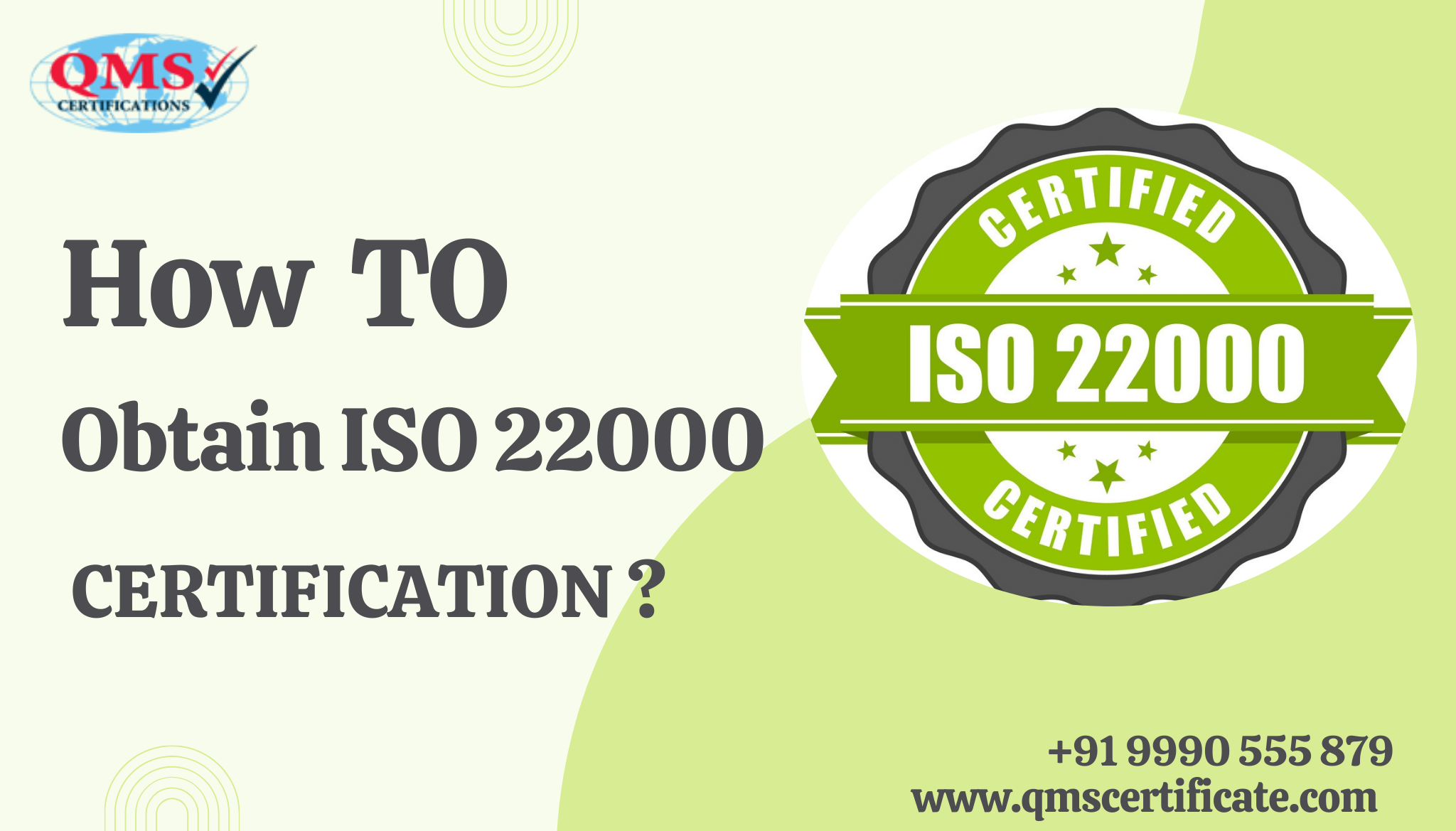How To Obtain ISO 22000 Certification?

1. Understand the Standard:
Familiarize yourself with the requirements of ISO 22000 Certification. You can purchase a copy of the standard or access it through relevant resources online.
2. Gap Analysis:
Conduct a gap analysis to assess your current food safety management system (FSMS) against the requirements of ISO 22000 Certification. Identify areas where your system needs improvement to meet the standard’s requirements.
3. Develop Documentation:
Develop and document the necessary policies, procedures, and records required by ISO 22000 Certification. This includes a food safety manual, procedures for hazard analysis and control, operational procedures, and records of monitoring and verification activities.
4. Implement the FSMS:
Implement the documented FSMS within your organization. Ensure that employees are trained and aware of their roles and responsibilities regarding food safety.
5. Conduct Internal Audits:
Conduct internal audits to assess the effectiveness of your FSMS and identify areas for improvement. Internal audits help ensure that your system is functioning as intended and meeting the requirements of ISO 22000 Certification.
6. Management Review:
Hold management reviews to evaluate the performance of your FSMS, identify opportunities for improvement, and make decisions about changes or corrective actions needed to maintain or enhance its effectiveness.
7. Select a Certification Body:
Choose an accredited certification body to conduct the certification audit. Ensure that the certification body has experience and expertise in auditing food safety management systems and is accredited by a recognized accreditation body.
8. Certification Audit:
The certification audit consists of two stages: Stage 1 and Stage 2. Stage 1 involves a review of your documentation and readiness for the certification audit. Stage 2 involves an on-site audit to assess the implementation and effectiveness of your FSMS.
9. Corrective Actions:
Address any non-conformities identified during the certification audit by implementing corrective actions to resolve the issues and ensure compliance with ISO 22000 Certification requirements.
10. Receive Certification:
If your organization successfully meets the requirements of ISO 22000 Certification, the certification body will issue an ISO 22000 Certification certificate. The certificate will specify the scope of certification and the validity period.
11. Maintain Certification:
Maintain your ISO 22000 Certification by conducting regular surveillance audits and reassessment audits as required by the certification body. Continuously improve your FSMS to ensure ongoing compliance with the standard’s requirements.
Conclusion
In conclusion, ISO 22000 Certification is a comprehensive standard that plays a vital role in ensuring food safety and quality within the food manufacturing industry. By adhering to the requirements of ISO 22000 Certification and obtaining certification, food businesses can enhance food safety practices, comply with regulations, and gain consumer trust and confidence. The benefits of ISO 220 00 Certification include improved efficiency, reduced risks, enhanced market access, and competitive advantage. Obtaining ISO 22000 Certification involves thorough preparation, implementation, and continual improvement of a robust food safety management system. By following the steps outlined, organizations can successfully obtain ISO 22000 Certification and demonstrate their commitment to producing safe and high-quality food products.